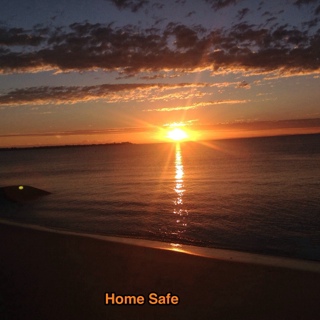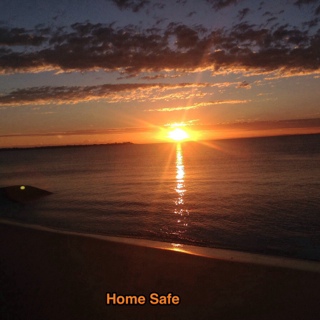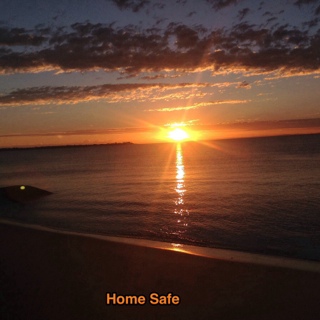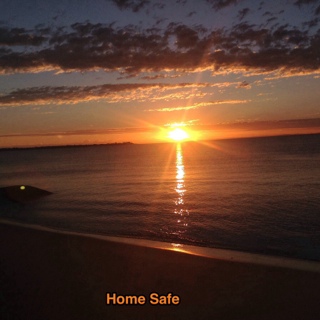Information
-
Document No.
-
Audit Title
-
Client / Site
-
Conducted on
-
Prepared by
-
Location
-
Personnel
MANAGING THE RISK OF FALLS
-
2. MANAGING THE RISK OF FALLS<br>2.1 How to identify fall hazards<br>You must identify all locations and tasks that could cause injury due to a fall. This includes access to the areas where work is to be carried out. Tasks that need particular attention are those carried out:<br>on any structure or plant being constructed or installed, demolished or dismantled, inspected, tested, repaired or cleaned<br>on a fragile surface (for example, cement sheeting roofs, rusty metal roofs, fibreglass sheeting roofs and skylights)<br>on a potentially unstable surface (for example, areas where there is potential for ground collapse)<br>using equipment to work at the elevated level (for example, when using elevating work platforms or portable ladders)<br>on a sloping or slippery surface where it is difficult for people to maintain their balance (for example, on glazed tiles)<br>near an unprotected open edge (for example, near incomplete stairwells)<br>near a hole, shaft or pit into which a worker could fall (for example, trenches, lift shafts or service pits).<br>Inspect the workplace<br>Walk around the workplace and talk to your workers to find out where work is carried out that could result in falls. A checklist may be useful in this process. Key things to look for include:<br>surfaces:<br>the stability, fragility or brittleness<br>the potential to slip, for example where surfaces are wet, polished or glazed<br>the safe movement of workers where surfaces change<br>the strength or capability to support loads<br>the slope of work surfaces, for example, where they exceed 7 degrees.<br>levels—where levels change and workers may be exposed to a fall from one level to another<br>structures—the stability of temporary or permanent structures<br>the ground—the evenness and stability of the ground for safe support of scaffolding or a work platform<br>the working area—whether it is crowded or cluttered<br>entry and exit from the working area <br>edges—protection for open edges of floors, working platforms, walkways, walls or roofs<br>holes, openings or excavations—which will require guarding<br>hand grip—places where hand grip may be lost.<br>In some situations, advice may be needed from technical specialists, such as structural engineers, to check the stability of structures or load bearing capacity.<br>Review available information, including incident records<br>You should check your records of previous injuries and ‘near miss’ incidents related to falls.<br>Information and advice about fall hazards and risks relevant to particular industries and work activities is also available from regulators, industry associations, unions, technical specialists and safety consultants.<br>2.2 How to assess the risk<br>A risk assessment will help you determine: <br>what could happen if a fall did occur and how likely it is to happen<br>how severe a risk is<br>whether any existing control measures are effective <br>what action you should take to control the risk<br>how urgently the action needs to be taken.<br>A risk assessment is unnecessary if you already know the risk and how to control it. <br>When assessing the risks arising from each fall hazard, the following matters should be considered:<br>the design and layout of elevated work areas, including the distance of a potential fall<br>the number and movement of all people at the workplace<br>the proximity of workers to unsafe areas where loads are placed on elevated working areas (for example, loading docks) and where work is to be carried out above people and there is a risk of falling objects<br>the adequacy of inspection and maintenance of plant and equipment (for example, scaffolding)<br>the adequacy of lighting for clear vision <br>weather conditions—the presence of rain, wind, extreme heat or cold can cause slippery or unstable conditions<br>the suitability of footwear and clothing for the conditions<br>the suitability and condition of ladders, including where and how they are being used<br>the adequacy of current knowledge and training to perform the task safely (for example, young, new or inexperienced workers may be unfamiliar with a task)<br>the adequacy of procedures for all potential emergency situations.<br><br>Generic risk assessment <br>If you are responsible for a number of different work areas or workplaces and the fall hazards are the same, you may perform a single (or generic) risk assessment. However, you should carry out a risk assessment on individual fall hazards if there is any likelihood that a person may be exposed to greater, additional or different risks.<br>2.3 How to control the risk<br>There are a number of ways to control the risks of falls. Some control measures are more effective than others. Control measures can be ranked from the highest level of protection and reliability to the lowest. This ranking is known as the hierarchy of control. The WHS Regulations require duty holders to work through this hierarchy to choose the control that most effectively eliminates or minimises the risk in the circumstances. This may involve a single control measure or a combination of two or more different controls.<br>In managing the risks of falls, the WHS Regulations require the following specific control measures to be implemented, where it is reasonably practicable to do so:<br>Can the need to work at height be avoided to eliminate the risk of a fall?<br>Carry out any work that involves the risk of a fall on the ground<br>Can the fall be prevented by working on solid construction?<br>A building or structure that is used as an existing place of work and includes safe access and egress from which there is no risk of a fall from one level to another, for example properly constructed stairs with fixed handrails, flat roofs with a parapet or permanently installed guard rails around the edges.<br>It is usually not necessary to implement additional control measures to manage the risk of falls for workplaces in buildings that already comply with the requirements of the National Construction Code of Australia, for example in relation to stairs, mezzanines and balconies.<br>Can the risk of a fall be minimised by providing and maintaining a safe system of work, including:<br>providing a fall prevention device (for example, installing guard rails) if it is reasonably practicable to do so, or<br>providing a work positioning system (for example, an industrial rope access system) if it is not reasonably practicable to provide a fall prevention device, or<br>providing a fall-arrest system, so far as is reasonably practicable, if it is not reasonably practicable to provide a fall prevention device or a work positioning system.<br>In some cases a combination of control measures may be necessary, for example using a safety harness while working from an elevating work platform.<br>Control measures are needed where there is a risk of injury irrespective of fall height. For low falls, you should assess the risk and provide reasonably practicable measures that reflect the risk. For example, there may be a risk of injury to workers standing on a narrow 1.7 metre high platform next to a production line where they have to work with their back to the open edge or where there is a risk of falling onto an uneven surface with sharp edges or protrusions. In this situation it may be reasonably practicable to install a guard rail along the edge of the platform. <br>Sometimes it may not be reasonably practicable to provide guard rails, for example at the edges of railway platforms or vehicle inspection pits. Other safe systems of work to provide adequate protection should be implemented, for example brightly painted lines to designate edges. <br>Work of long duration and higher frequency will usually require control measures higher up the hierarchy to provide adequate protection, for example using a mobile scaffold instead of a ladder. <br>You should also ensure that the control measures you select do not create new hazards, for example electrical risks from contact with overhead power lines or crushing and entanglement from plant such as elevating work platforms.<br>Implementing and maintaining control measures<br>Regulation 37 You must ensure that the control measures you implement remain effective. This includes checking that the control measures are fit for purpose; suitable for the nature and duration of the work; are installed and used correctly.<br>To allow the chosen control measures to operate effectively, you should:<br>develop work procedures on how to correctly install, use and maintain the control measure. The procedures should include a planned program of inspections and maintenance for the control measures. The inspection regime should include details of:<br>the equipment to be inspected (including its unique identification)<br>the frequency and type of inspection (pre-use checks, detailed inspections)<br>action to be taken on finding defective equipment<br>means of recording the inspections<br>training of users<br>the system of monitoring the inspection regime to verify that inspections are carried out appropriately.<br>The manufacturer and/or supplier of the equipment should be consulted for any product specific requirements. If any signs of wear or weakness are found during the inspection, the components or means of attachment must be withdrawn from use until they are replaced with properly functioning components. <br>provide information, training and instruction to workers, including procedures for emergency and rescue. You should also cover: <br>the type of control measures used to prevent falls <br>procedures for reporting fall hazards and incidents<br>the correct selection, fitting, use, care, inspection, maintenance and storage of fall-arrest and restraint equipment <br>the correct use of tools and equipment used in the work (for example, using a tool belt instead of carrying tools)<br>control measures for other potential hazards (for example, electrical hazards).<br>provide supervision by ensuring that workers exposed to a risk of a fall are adequately supervised by a competent person, especially if they are undergoing training or are unfamiliar with the working environment. Check that:<br>only workers who have received training and instruction in relation to the system of work are authorised to carry out the work <br>workers use the fall control measure in the correct manner.<br>2.4 How to review control measures<br>The control measures that are put in place to prevent falls must be reviewed, and if necessary revised, to make sure they work as planned and to maintain an environment that is without risks to health and safety. <br>Regulation 38: A person conducting a business or undertaking must review and as necessary revise fall control measures:<br>when the control measure does not control the risk so far as is reasonably practicable<br>before a change at the workplace that is likely to give rise to a new or different health and safety risk that the control measure may not effectively control<br>if a new hazard or risk is identified<br>if the results of consultation indicate that a review is necessary<br>if a health and safety representative requests a review.<br>Control measures may be reviewed using the same methods as the initial hazard identification step. <br>Consult your workers and their health and safety representatives and consider the following:<br>Are the control measures working effectively in both their design and operation?<br>Are all fall hazards being identified?<br>Are workers using the control measures in accordance with the instruction and training that has been provided? <br>
-
-
Add signature












